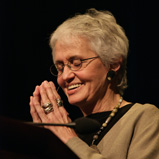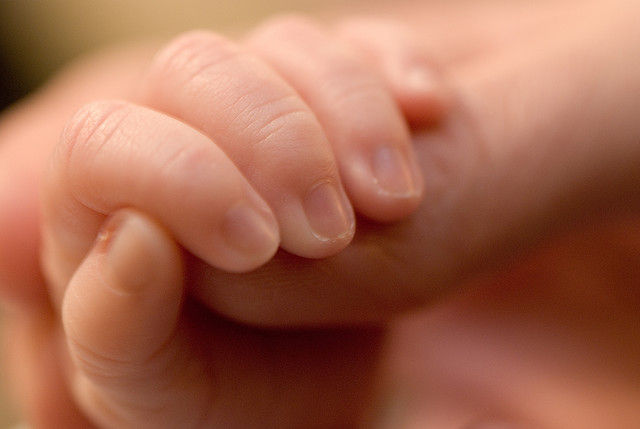Helping, Fixing or Serving?
 Helping, fixing and serving represent three different ways of seeing life. When you help, you see life as weak. When you fix, you see life as broken. When you serve, you see life as whole. Fixing and helping may be the work of the ego, and service the work of the soul.
Helping, fixing and serving represent three different ways of seeing life. When you help, you see life as weak. When you fix, you see life as broken. When you serve, you see life as whole. Fixing and helping may be the work of the ego, and service the work of the soul.
Service rests on the premise that the nature of life is sacred, that life is a holy mystery which has an unknown purpose. When we serve, we know that we belong to life and to that purpose. From the perspective of service, we are all connected: All suffering is like my suffering and all joy is like my joy. The impulse to serve emerges naturally and inevitably from this way of seeing.
Serving is different from helping. Helping is not a relationship between equals. A helper may see others as weaker than they are, needier than they are, and people often feel this inequality. The danger in helping is that we may inadvertently take away from people more than we could ever give them; we may diminish their self-esteem, their sense of worth, integrity or even wholeness.
When we help, we become aware of our own strength. But when we serve, we don’t serve with our strength; we serve with ourselves, and we draw from all of our experiences. Our limitations serve; our wounds serve; even our darkness can serve. My pain is the source of my compassion; my woundedness is the key to my empathy.
Serving makes us aware of our wholeness and its power. The wholeness in us serves the wholeness in others and the wholeness in life. The wholeness in you is the same as the wholeness in me. Service is a relationship between equals: our service strengthens us as well as others. Fixing and helping are draining, and over time we may burn out, but service is renewing. When we serve, our work itself will renew us. In helping we may find a sense of satisfaction; in serving we find a sense of gratitude.
Harry, an emergency physician, tells a story about discovering this. One evening on his shift in a busy emergency room, a woman was brought in about to give birth. When he examined her, Harry realized immediately that her obstetrician would not be able to get there in time and he was going to deliver this baby himself. Harry likes the technical challenge of delivering babies, and he was pleased. The team swung into action, one nurse hastily opening the instrument packs and two others standing at the foot of the table on either side of Harry, supporting the woman’s legs on their shoulders and murmuring reassurance. The baby was born almost immediately.
 While the infant was still attached to her mother, Harry laid her along his left forearm. Holding the back of her head in his left hand, he took a suction bulb in his right and began to clear her mouth and nose of mucous. Suddenly, the baby opened her eyes and looked directly at him. In that instant, Harry stepped past all of his training and realized a very simple thing: that he was the first human being this baby girl had ever seen. He felt his heart go out to her in welcome from all people everywhere, and tears came to his eyes.
While the infant was still attached to her mother, Harry laid her along his left forearm. Holding the back of her head in his left hand, he took a suction bulb in his right and began to clear her mouth and nose of mucous. Suddenly, the baby opened her eyes and looked directly at him. In that instant, Harry stepped past all of his training and realized a very simple thing: that he was the first human being this baby girl had ever seen. He felt his heart go out to her in welcome from all people everywhere, and tears came to his eyes.
Harry has delivered hundreds of babies, and has always enjoyed the excitement of making rapid decisions and testing his own competency. But he says that he had never let himself experience the meaning of what he was doing before, or recognize what he was serving with his expertise. In that flash of recognition he felt years of cynicism and fatigue fall away and remembered why he had chosen this work in the first place. All his hard work and personal sacrifice suddenly seemed to him to be worth it.
He feels now that, in a certain sense, this was the first baby he ever delivered. In the past he had been preoccupied with his expertise, assessing and responding to needs and dangers. He had been there many times as an expert, but never before as a human being. He wonders how many other such moments of connection to life he has missed. He suspects there have been many.
As Harry discovered, serving is different from fixing. In fixing, we see others as broken, and respond to this perception with our expertise. Fixers trust their own expertise but may not see the wholeness in another person or trust the integrity of the life in them. When we serve we see and trust that wholeness. We respond to it and collaborate with it. And when we see the wholeness in another, we strengthen it. They may then be able to see it for themselves for the first time.
One woman who served me profoundly is probably unaware of the difference she made in my life. In fact, I do not even know her last name and I am sure she has long forgotten mine.
At twenty-nine, because of Crohn’s Disease, much of my intestine was removed surgically and I was left with an ileostomy. A loop of bowel opens on my abdomen and an ingeniously designed plastic appliance which I remove and replace every few days covers it. Not an easy thing for a young woman to live with, and I was not at all sure that I would be able to do this. While this surgery had given me back much of my vitality, the appliance and the profound change in my body made me feel hopelessly different, permanently shut out of the world of femininity and elegance.
At the beginning, before I could change my appliance myself, it was changed for me by nurse specialists called enterostomal therapists. These white-coated experts were women my own age. They would enter my hospital room, put on an apron, a mask and gloves, and then remove and replace my appliance. The task completed, they would strip off all their protective clothing. Then they would carefully wash their hands. This elaborate ritual made it harder for me. I felt shamed.
One day a woman I had never met before came to do this task. It was late in the day and she was dressed not in a white coat but in a silk dress, heels and stockings. She looked as if she was about to meet someone for dinner. In a friendly way she told me her first name and asked if I wished to have my ileostomy changed. When I nodded, she pulled back my covers, produced a new appliance, and in the most simple and natural way imaginable removed my old one and replaced it, without putting on gloves. I remember watching her hands. She had washed them carefully before she touched me. They were soft and gentle and beautifully cared for. She was wearing a pale pink nail polish and her delicate rings were gold.
At first, I was stunned by this break in professional procedure. But as she laughed and spoke with me in the most ordinary and easy way, I suddenly felt a great wave of unsuspected strength come up from someplace deep in me, and I knew without the slightest doubt that I could do this. I could find a way. It was going to be all right.
 I doubt that she ever knew what her willingness to touch me in such a natural way meant to me. In ten minutes she not only tended my body, but healed my wounds. What is most professional is not always what best serves and strengthens the wholeness in others. Fixing and helping create a distance between people, an experience of difference. We cannot serve at a distance. We can only serve that to which we are profoundly connected, that which we are willing to touch. Fixing and helping are strategies to repair life. We serve life not because it is broken but because it is holy.
I doubt that she ever knew what her willingness to touch me in such a natural way meant to me. In ten minutes she not only tended my body, but healed my wounds. What is most professional is not always what best serves and strengthens the wholeness in others. Fixing and helping create a distance between people, an experience of difference. We cannot serve at a distance. We can only serve that to which we are profoundly connected, that which we are willing to touch. Fixing and helping are strategies to repair life. We serve life not because it is broken but because it is holy.
Serving requires us to know that our humanity is more powerful than our expertise. In forty-five years of chronic illness I have been helped by a great number of people, and fixed by a great many others who did not recognize my wholeness. All that fixing and helping left me wounded in some important and fundamental ways. Only service heals.
Service is not an experience of strength or expertise; service is an experience of mystery, surrender and awe. Helpers and fixers feel causal. Servers may experience from time to time a sense of being used by larger unknown forces. Those who serve have traded a sense of mastery for an experience of mystery, and in doing so have transformed their work and their lives into practice.
This article is reprinted here with permission. Rachel Naomi Remen, MD is Clinical Professor of Family and Community Medicine at the UCSF School of Medicine. She is a pioneer of Relationship Centered Medicine and Medical Education and her course in Formation for medical students, the Healer's Art, is taught annually in more than half of American medical schools and 6 countries abroad. Her books, Kitchen Table Wisdom and My Grandfather's Blessings are published in 21 languages. Her nationwide training programs remind physicians and students that the practice of medicine is essentially an act of love.
SHARE YOUR REFLECTION
13 Past Reflections


On Nov 14, 2023 Jim Kennedy wrote:
1 reply: Barbara | Post Your Reply

On Mar 16, 2017 jturner_crowson wrote:

On Jun 5, 2016 Cate Saxton wrote:

On Aug 8, 2013 Wayne Iba wrote:
The two poignant anecdotes convey the mystery of two souls touching. But in the case of the woman helping change the ileostomy, can we be certain that her mindset was serving and not helping or even fixing? My point is that the motivation and intention of the 'helper' is only one of several factors influencing the nature of an interaction. Some of the previous 'helpers' that were found wanting may have genuinely intended to serve, yet for reason of some lack (could be empathy, awareness, expertise, or a number of others) failed to give rise to the 'connection' that is so delightful and healing. Likewise, failure to make such connections can be attributed to the one receiving help or service.

On Jun 2, 2012 Life-Quotes wrote:
Hello! I just would like to give a huge thumb up for the
great info you have here on this post. I will be coming back to your blog for
more soon.

On Apr 26, 2012 Inspired wrote:
What a revelation... and so true! I am deeply moved and humbled by your article. For a long time I "fixed" and "helped" one of my children who struggled with life. I thought this was my duty as a "good" and loving mother - to see that she had a good life. I couldn't understand why nothing I did made her feel better or changed her outlook and self-esteem for the better. I see now that my actions were having just the opposite effect on her. Your article has inspired me.
1 reply: Gus | Post Your Reply

On Apr 25, 2012 Dea wrote:
wow, powerful truths....as ususal they make me cry like a baby. Wonderful- thank you so much!

On Apr 18, 2012 seychel wrote:
Dr. Remen has clearly defined the true and beautiful meaning of what it really means to serve!! Absolutely amazing! I actually never really paid attention to the meaning of helping, fixing and serving. I knew what they meant but not in the way she explains and sheds light on it.
Dr. Remen, I thank you from the place in my heart which is deeper than one can imagine. You have really changed my view of serving the mankind. Now, I really know what it is to REALLY serve someone.
I will serve now instead of helping people as I have been doing in the past.
I send you lots of light and love,
Seychel

On Apr 17, 2012 Lakshmi Ramamurthy wrote:
Thank you for saying this truth in a manner that it 'reached' home.

On Apr 17, 2012 DenisKhan wrote:
"Even after all this time the sun never says to the Earth, 'You owe me'
For the Sun, and the Moon, no one is a stranger!"

On Apr 16, 2012 Giammona wrote:
I have been by my busbands side for the last five months as his healing continues to unfold. This article has helped me gain perspective in the care the medical world has presented and the support those around us have given, along with my own relationship to his healing. There is a difference when acts of kindness and support are woven intricately with spirit.


On Nov 19, 2023 Barbara Ward wrote:
Post Your Reply